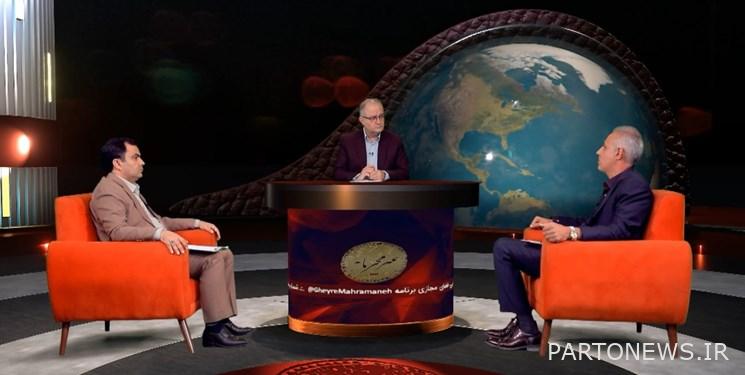Two Roots of Chronic Economic Inflation in Iran / Lack of Central Bank Supervision of Private Banks

According to Fars News Agency, a non-confidential TV program on the subject of “value for money” with the presence of “Bijan Panahizadeh, Deputy Minister of Industry, Mines and Commerce”; “Gholamreza Marhaba, Spokesman of the Economic Commission of the Islamic Consultative Assembly”; “Hamid Azarmand, an economic expert” and “Shahriar Sadeghi, an economic expert” were broadcast on October 5 on Do Sima.
Marhaba, the spokesman of the Economic Commission of the Islamic Consultative Assembly, stated: “Considering that money is a rare and sensitive commodity, it has an exclusive feature that is different from other commodities, and that is that it is exclusively in the hands of the government.” But the price of money and its price in the market are subject to the conditions that we have witnessed in recent years the fall in the value of the national currency.
He added: “It seems that we have gone the wrong way. Instead of trying to solve the problem, we went for the disabled and the government sought to regulate the prices of goods that are not fundamentally for the government.”
Marhaba added: “The main reason is the same error that we have been trying to solve the problem elsewhere instead of the main focus.” Inflation The universal science of economics has a definition that says that inflation is a monetary phenomenon everywhere and in every country and everywhere. This means that we must control inflation and the price of money by using monetary and fiscal policies. Unfortunately, in our country, especially in recent years, these tools have been used less and we have sought to solve the effects of the problems created by the lack of basic policies.
He emphasized that The ease of trade and the entry of oil dollars does not bring happiness to an economyTo solve inflation, he said, one should not look for limited time and periodic causes. Rather, we need discipline in monetary and fiscal policies. Fiscal policies that determine government revenue and expenditure.
A spokesman for the parliament’s economic commission said: “Some of the projects that were created in the country, regardless of how they were financed, basically increased the country’s monetary base and became a factor for inflation.” On the other hand, due to the catastrophic management that was done, specifically (Mehr Housing), many of these units have not yet reached the consumer. On the one hand, it hit the economy, increased inflation and increased the country’s monetary base.
“The issue of the economy and livelihood of the people is the main concern of male servants, and as a result of what has happened and the wrong policies that have been taken in the past, the sanctions of the enemies and other problems that have existed, have made them ashamed of their livelihood and welfare.” Be the people of the country. Also in the discussion of employment, which is the concern of all our families and less families can be found that one or two educated young people are not ready to enter the labor market at home. We hope to join hands to help each other and choose the right path and solve economic problems one after another.
Lack of central bank supervision over private banks is one of the reasons for the devaluation of the national currency
Panahizadeh, deputy director of the country’s Chamber of Industry, Mines and Commerce, continued the program: “There are many reasons for the devaluation of the national currency, which depends on the country.” Some issues to the economic policies of the government in the country or country that intends to artificially devalue the national currency to support production and exports because of the balance it wants to export.
Stating that Iran is an oil country, he added: “Oil countries, especially the Third World, are under pressure from major powers for their foreign exchange resources.” Countries that rely on oil sales are more consumers, and most of the resources from oil sales should be spent on weapons or goods.
Panahizadeh said: “Top countries always put pressure, one of which is product prices and inflation.”
He said: “In our country, because we rely on the sale of oil, we convert the resources from the sale of oil into rials for the current expenses of the government and the import of basic goods and other issues.” Unfortunately, when the inflow of currency into the country decreases due to economic and political pressures, the costs of the country that intends to exchange money with other countries increase.
Panahizadeh called another issue the loss of public confidence in the value of the national currency and said: “The flight of currency from the country is one of the most important reasons that causes the national value to fall.” The influx of people to foreign exchange due to political pressures and the conversion of foreign exchange into capital goods is another issue.
He said: “Unfortunately, one of the important issues that the central bank ignored for nearly two decades is the lack of central bank supervision over private banks and institutions.” It is estimated that the 30 percent devaluation of the national currency is due to the creation of money and events that took place in financial and credit institutions and contributed to the devaluation of the national currency.
Panahizadeh continued: “In general, one case can not be considered as a reason for the devaluation of the national currency, and several cases have caused this trend, and the general situation is such that we are facing a devaluation of the national currency.”
“Some of the government’s plans are inflationary, and when the government does not have the resources, it is forced to borrow from the central bank,” he said. The current expenses of the government are so high that whatever oil we sell and taxes are paid is poured into the throats of companies and turned into salaries. Therefore; The government must shrink.
Panahizadeh reminded: reducing inflation or curbing inflation and preserving the value of the national currency are two categories that the government and parliamentarians and the people have solved.
Iran’s chronic economic inflation has no more than two roots
Azarmand, a senior economic expert, also said: “Although the devaluation of the national currency is specified in the upstream documents of the country and this phrase is very much a term, but it is very prone to misunderstanding and misunderstanding.”
He added: in the thirty-year period, the average economic growth of the country was 2.8 percent and during this period, the average growth of liquidity was 28 percent. Economic theories tell us that we should expect a chronic economy. Because the gap between the real sector, which is the production of goods and services, and the nominal and financial sector of the economy has occurred, and the result is that we had an average of 22% inflation during this period, which has increased in recent years. In 2019, before Corona, the average world inflation was 2.3 percent, the average inflation in West Asia and North Africa was 1.1 percent and the average inflation in OECD countries was 1.7 percent. Therefore; We are facing a special phenomenon. This is not just a matter of operating certain markets, processing exchange rates, making goods more expensive or cheaper in a particular market. Rather, we are facing a macroeconomic phenomenon.
Azarmand believes; This issue can be fully explained economically and Iran’s chronic economic inflation has no more than two roots. The first root and factor is the reduction of production capacities or the so-called potential production or potential output of the economy, which is due to reduced investment, and the second root is financial expansion and imbalance in the economy.
He added: “Imbalances also have two main roots, the first of which is the budget deficit and the second is the imbalance in the banking system.” so; There is no need to enter minor markets and point to a specific period. Easily in the long run if we pathologize these two factors, it seems that we will get our answer from these two factors.
Azarmand pointed out: If we examine the trend of the 40s and 50s along. Since the early 1950s, when we faced a jump in oil revenues, it has been observed that the balance sheet of the central bank has been expanding sharply due to the purchase of currency and the injection of rials.
He reminded: in 1977, it had one of the highest inflation rates in several decades. There are mechanisms in oil economies that, in the absence of efficient financial regulation, lead to inflation.
Azarmand added: “Oil economies either have periods of oil revenue boom or oil revenue recession.” During the boom period, oil revenues, on the other hand, increase the net foreign assets of the central bank by buying foreign currency and injecting rials into the economy, which will be the source of inflation. At the same time, during periods of financial prosperity, the government raises its spending, boosting demand in the economy, which will be the source of rising inflation. In subsequent cycles, which are periods of stagnant oil revenues, the opposite is true and government revenues decline, but the government cannot reduce its spending due to social commitments or political considerations. so; In various ways, it transfers its budget deficit to the balance sheet of the Central Bank. With different mechanisms that are in fact of the same nature, the legal form of which can be different. So in negative economies, if the 50s and indeed the same thinking continued, we would still have chronic inflation. This complication, regardless of which government is in power, is a complication that occurs in the absence of a financial rule for oil revenues and occurs in countries with oil revenues. so; There are two solutions to solve chronic inflation. One solution is the government’s financial rule that solves the budget deficit, and the other is the banking system issue, which seems to have many misunderstandings in the mechanisms of money creation in the banking system.
The value of the national currency has not been properly understood
Sadeghi, an economic expert, pointed out: “Unfortunately, one of the most important points in the country is our inaccurate understanding of the value of the national currency, and this inaccuracy with the value of the national currency has caused us to face it and the actions we have taken.” Not only will the problems not be solved, but this weakness will deepen.
He added: “The first inaccurate impression is that we think the value of the national currency means the price that exists in the economy.” The result of this misconception is that we try to order prices and try to control prices and set up a market regulation headquarters. The second perception, which is an inaccurate perception, assumes that the value of the national currency means the exchange rate and the price of the dollar, and we think that in order to maintain the value of our national currency, we must prevent the dollar from rising. If we see that prices are rising in the economy.
Sadeghi said that in order to understand the exact value of the national currency accurately, we must refer to the definition of inflation. It becomes.
He added: “In order to have an accurate understanding and to solve this problem radically, we must address inflation and the causes of inflation.”
“Non-Confidential” is a work by the Economics and Knowledge Group, produced and directed by Alireza Ebrahimi and performed by Mohammad Jafar Khosravi, which will be broadcast on Fridays at 5:45 PM on Do Sima TV.
End of message / b
.

